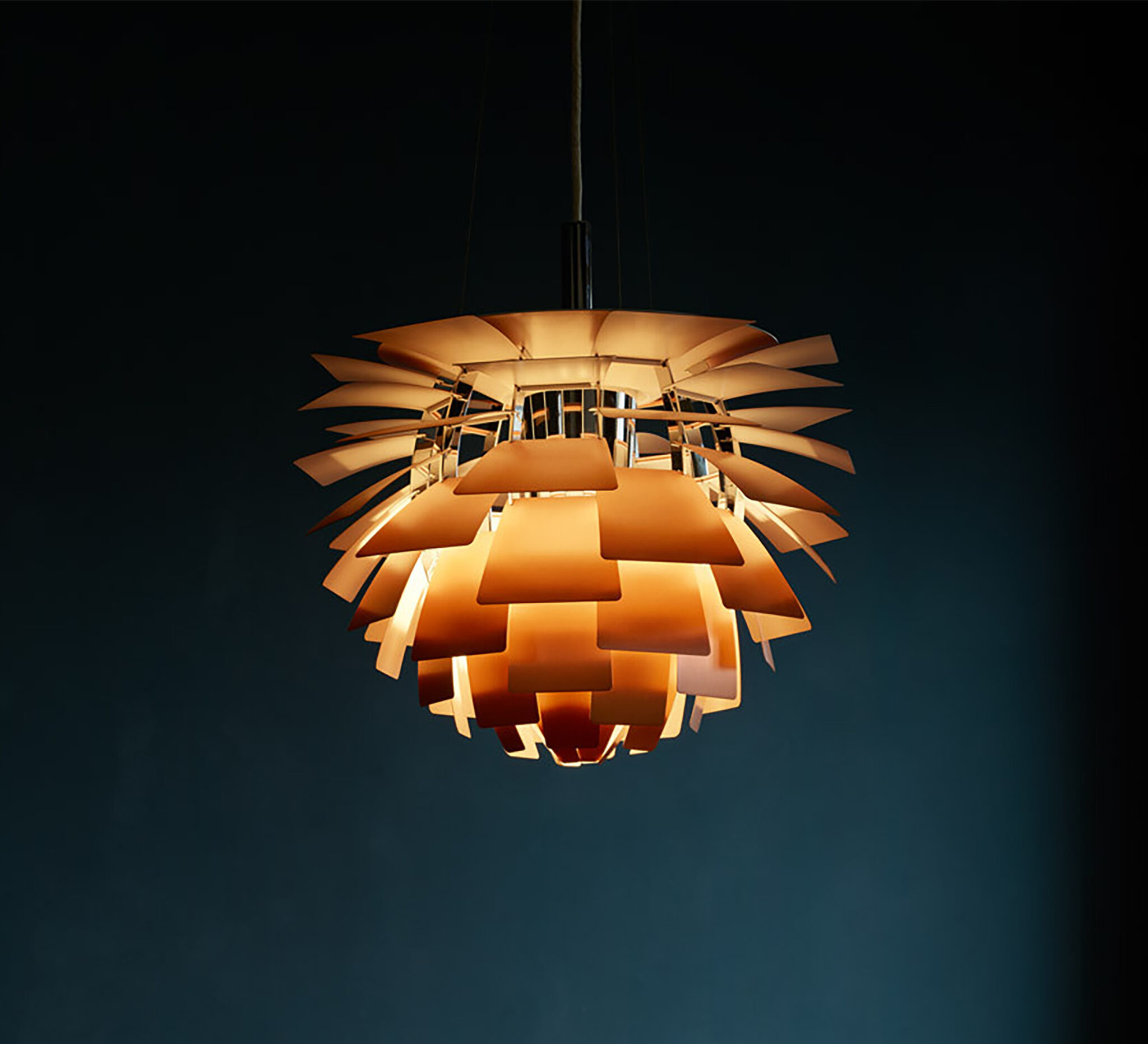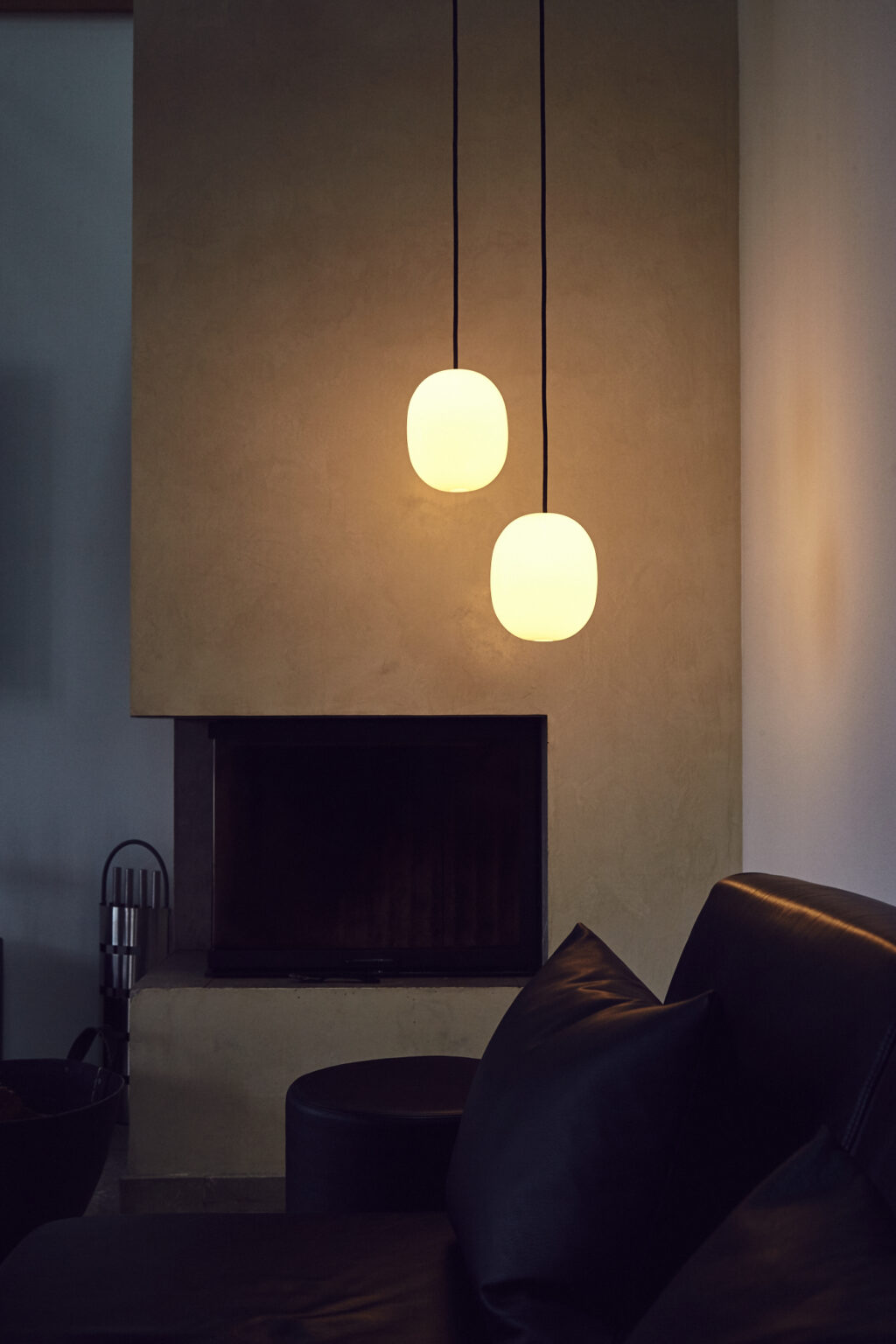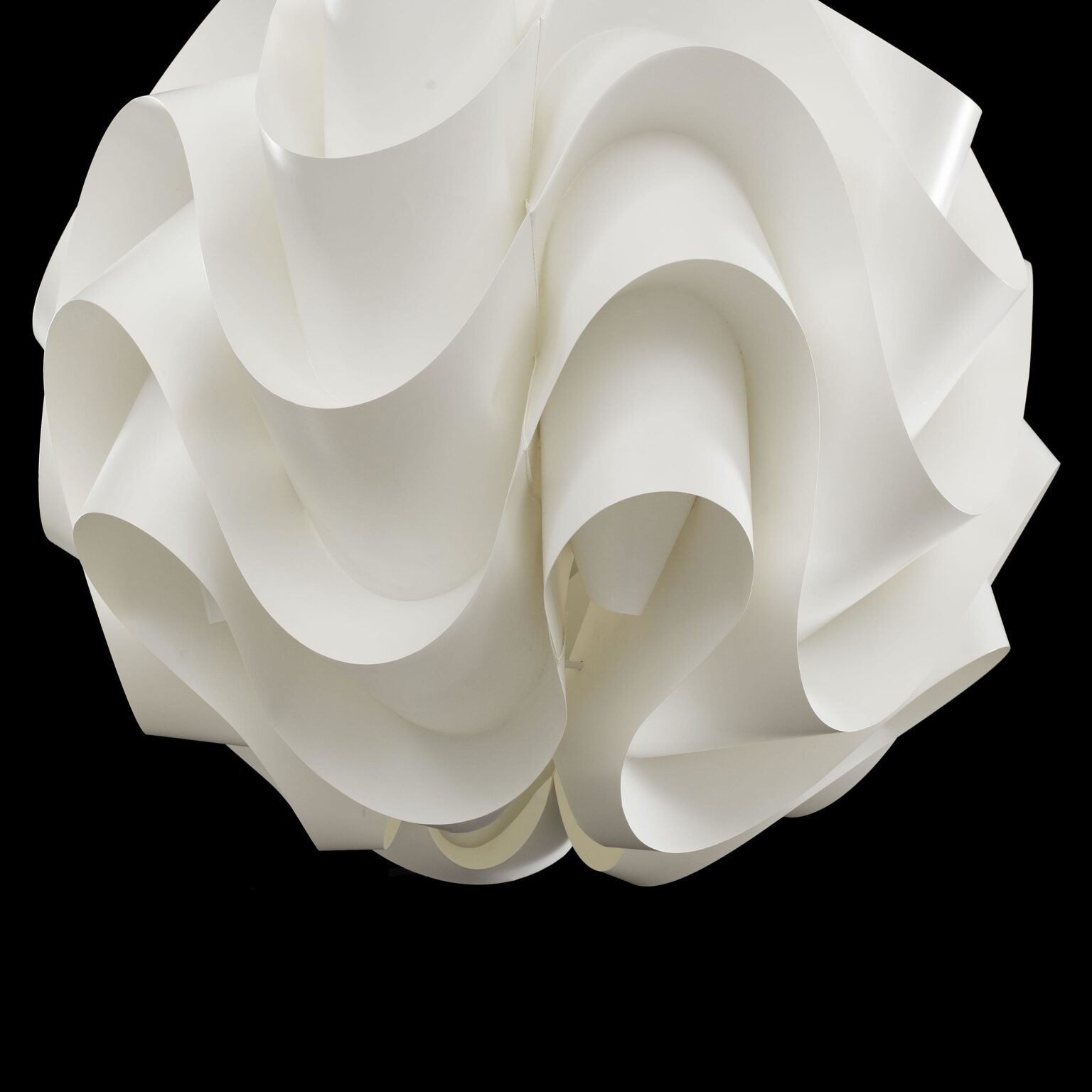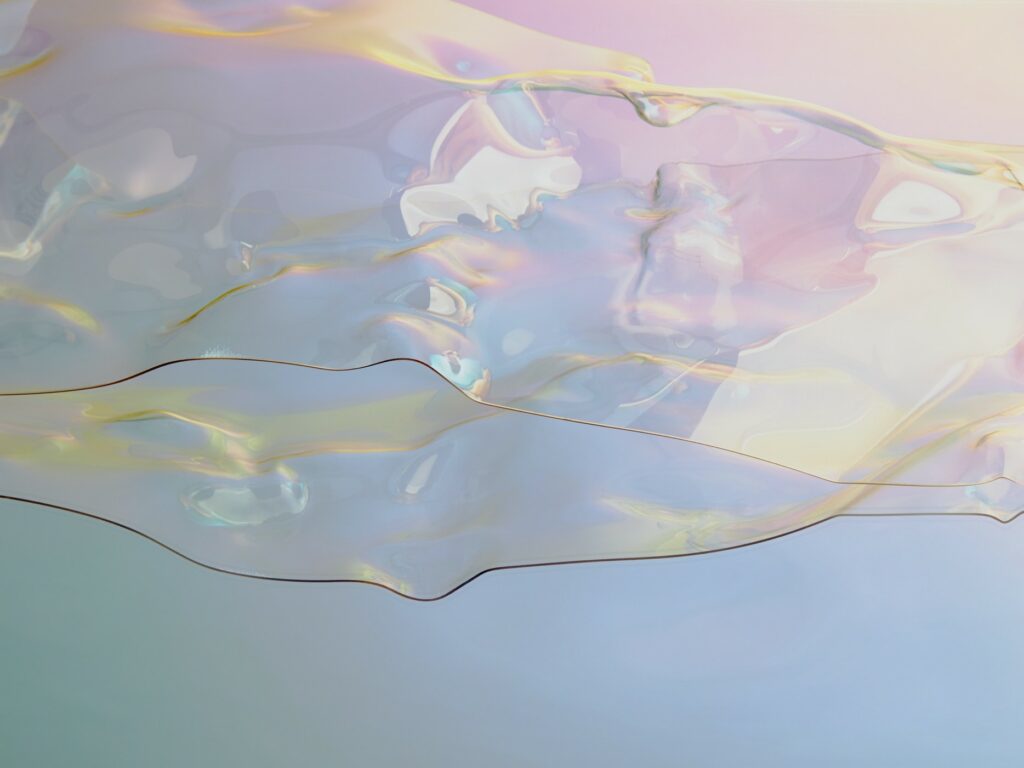Achieving "Hygge" with Iconic Danish Lighting
While the soft glow from a fireplace or the calm flickering of candles is undoubtedly one way to create “hygge”, it is by no means the only way. Thankfully, the Danish lighting designers mastered the art with soft, glare-free artificial lighting that we now consider to be some of the most iconic lighting designs of the 20th century.

Words:
Team ENSEMBL
Achieving “hygge” in your home requires the right light. While the soft glow from a fireplace or the calm flickering of candles is undoubtedly one way to create “hygge”, it is by no means the only way. “Hygge” can also be achieved with soft, glare-free artificial lighting. Some of the best examples of this kind of light come from Denmark and the lighting philosophy championed by iconic Danish designers starting as early as the 1920s.
Poul Henningsen – PH-5 Lamp, The Artichoke Lamp:
Born in 1894 in Odrup, Denmark, Poul Henningsen was an author, architect, designer, and academic. He is most well-known for his work as a lighting designer. He is credited for establishing “light architecture” and designed his lights based on the theory that one should never see the harsh glare of the actual light source when looking at a light. Instead, he designed lamps so that layers of the shades were placed between the light source and the subject. Arguably his most iconic works are the PH-5 and The Artichoke. PH-5 was originally designed in 1925 and The Artichoke was originally designed in 1958; both lamps follow his lighting philosophy and continue to be produced today.
Arne Jacobsen – AJ Pendant:
Jacobsen, born in 1902 in Copenhagen, studied architecture and design at the Royal Danish Academy of Fine Arts. He one of Denmark’s most famous designers, and is renowned for designing iconic furniture, including chairs, as well as tablewares and houseware pieces. Jacobesen also established himself as a successful lighting designer.
The iconic AJ Lamps (1957) were designed for the SAS Royal Hotel in Copenhagen. True to the Danish philosophy, the lights are designed to be glare free, and are made with an acrylic opal base plate which ensures soft light is emitted.


Piet Hein – Superellipse The Superegg Lamp:
Hein was born in 1905 in Copenhagen, Denmark. Hein was a mathematician, inventor, poet and designer, with a degree in theoretical physics from the University of Copenhagen. He was famous for drawing on his mathematical background as he designed, and his work, Superellipse The Superegg Lamp is a perfect example of this. Combining math and design, Hein looked to a unique shape, the superegg, created by rotating an elongated superellipse with exponent greater than 2 around its longest axis. The superegg shape was used by Hein to create the Superegg Lamp (1965). Its look is completely unique from other lighting designed at that time, and yet by using opal glass, the superegg follows the Danish design philosophy and creates a soft, glare-free light experience for the user.
Hans J Wegner – The Pendant, The Opala:
Wegner was born in 1914 in Tonder, Denmark, and studied at the School of Arts and Crafts (now the Danish Design School). Wegner is most famous for his work creating chairs, but his work in lighting design should not be overlooked. He designed The Pendant (1962); a pendant light made to be moved up or down, featuring an integrated handle below the lamp to assist the user in changing the positioning the light within their space. Wegner also designed the Opala series (1970s) as part of a commission by Hotel Scandinavia in Copenhagen. The Opala featured a sleek minimal look, due in part to the use of the acrylic shade. Both The Pendant and The Opala continue to remain popular, with select sizes of each in production today.
Verner Paton – Moon Lamp, The Flowerpot Lamp:
Paton was born in Funen, Denmark in 1926 and studied architecture before beginning a career blending architecture and design. Paton’s iconic designs include the Moon Lamp (1960), which used ring shaped discs that were suspended around a bulb to create a unique lamp. The discs served two functions: both to hide the bulb and to reflect the light, resulting in a soft refined light which is spread throughout the room. His later design, The Flowerpot (1969) eschews the fun, flower power spirit of the late 1960s, while keeping to the Danish philosophy at its core. The lamp is made of two semi-circular spheres which face each other. The lower sphere is used to hide the bulb, while the interior serves as a reflecting service. The Flowerpot gives off a generous amount of soft light.
Preben Dahl – Symfoni:
Dahl’s distinct style relied on geometric shapes, with an emphasis on rhombid facets, which were used to deflect and distribute the light within, while offering the viewer a warm, diffused light. His collection of Symfoni lamps were released for the company Hans Folsgaard from 1960-1969.
Louis Weisdorf – The Conch (or Konkylie):
Weisdorf was born in 1932 and studied at the Royal Danish Academy of Fine Arts in Copenhagen where he spread his time between graphic, interior and industrial design. In 1961 he began work on a long-term project at Tivoli Garden in Copenhagen. The iconic “Conch” pendant (“Konkylie” in Danish) was designed by Weisdorf as part of that project. The light was made to hang in the trees at Tivoli and cast off soft, warm light to the viewers below.


Poul Christiansen: for Le Klint:
Christiansen, born in 1947, trained in architecture and design at the Royal Danish Academy of Fine Arts. Christiansen’s most iconic lighting creation was done for Danish brand, Le Klint. Le Klint lamps stand out on account of their iconic sculptural look with hand-folded layers based on mathematical curves. These layers cover the light bulb but become entirely illuminated, offering a unique soft light. Le Klint lamps are made in Odense, Denmark, where workers meticulously fold the pleats of each lampshade by hand. Christensen created Model 172 in 1969; the lamp continues to be produced today.
Bent Karlby – Dinette Pendant:
Karlby created this lamp in the 1970’s; its sleek acrylic feels on-point for that era of design. Yet, Karlby still follows the original Danish lighting philosophy, by ensuring the blub placement – inside the translucent white acrylic core – allows for a glare free, soft light experience.
Cecilie Manz – The Caravaggio Lamp:
Following the design philosophy of PH but adding a modern, industrial twist, Manz’s Caravaggio Lamp (2005) provides ambience but avoids exposing the subjects to glare from the main light source, regardless of where one chooses to sit in relation to the lamp. Manz’s design is more contemporary, as it incorporates Italian mid-century minimalism, while remaining decidedly Danish.
More Stories
-
 17.11.2025 | News
Black Friday Sale - 45% off everything *including Stackware*
17.11.2025 | News
Black Friday Sale - 45% off everything *including Stackware*
Our biggest (and only) sale of the year is here. Over $460++ off cookware. 45% off everything.*
-
 05.11.2023 | News
Celebrating with Rolls-Royce
05.11.2023 | News
Celebrating with Rolls-Royce
Bringing design, innovation, sustainability, performance, luxury, and craftsmanship together.
-
 01.11.2023 | News
Utility Patent Granted
01.11.2023 | News
Utility Patent Granted
The ENSEMBL: Stackware Removable Handle has received a utility patent.
Free shipping on all North American orders.